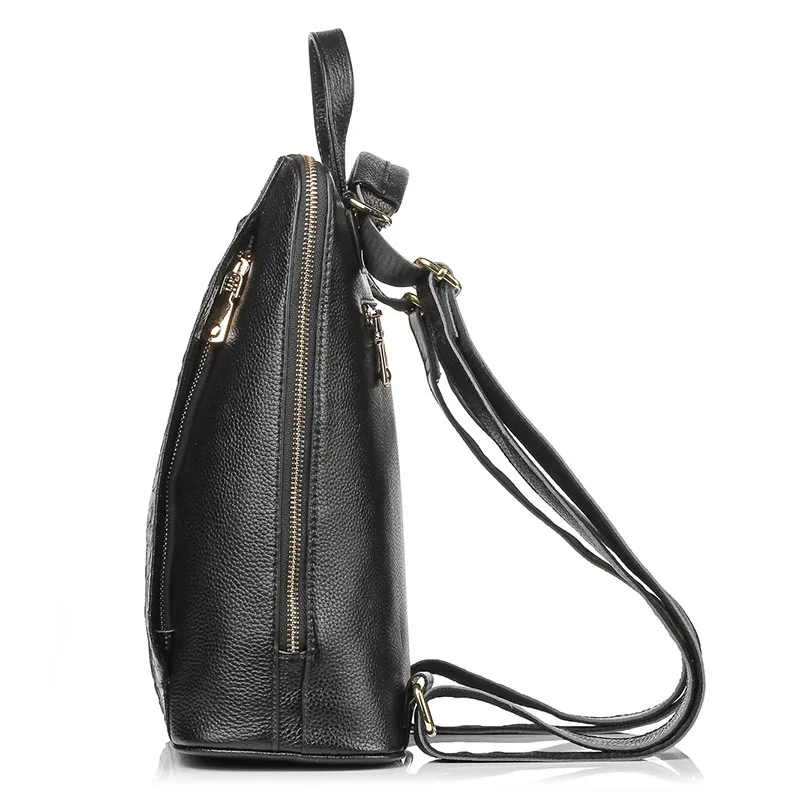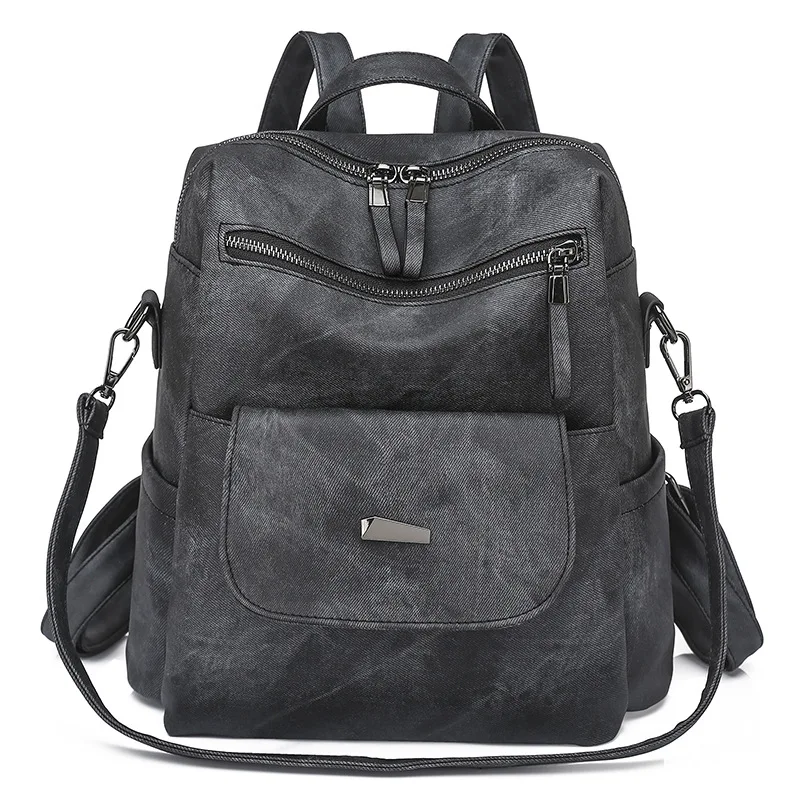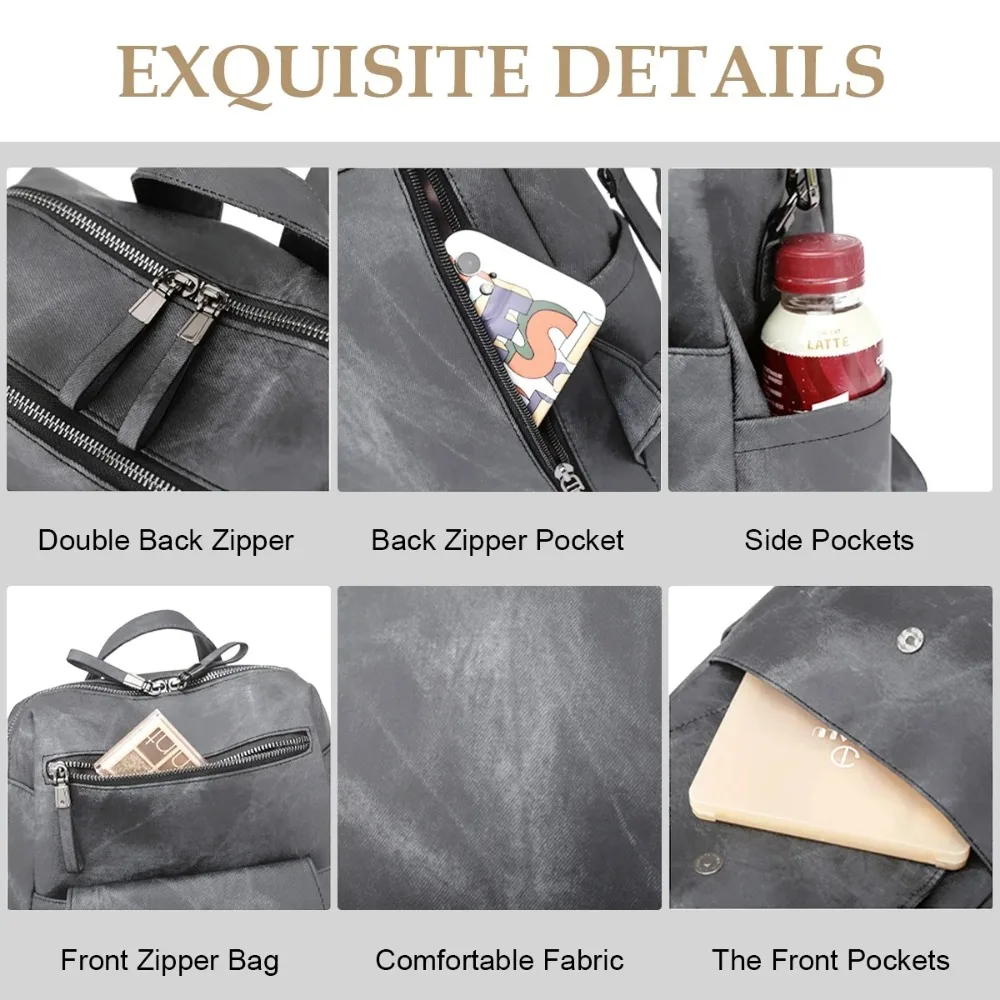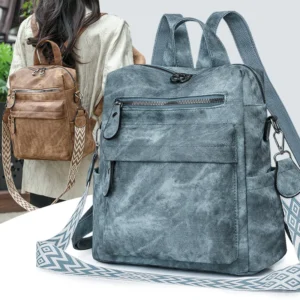1. The Importance of Proper Leather Conditioning
Leather conditioning is a crucial maintenance practice that helps preserve the beauty and extend the life of your leather goods. It involves applying specialized products that replenish essential oils and moisture to keep leather supple, soft, and resistant to damage.
Without regular conditioning, leather can:
– Become dry and brittle
– Develop unsightly cracks
– Lose its natural flexibility
– Age prematurely
– Show increased wear and damage
The relationship between leather’s moisture content and conditioning effectiveness is particularly important. Leather naturally contains moisture, and maintaining the right balance is key to its longevity. Proper leather conditioning and waterproofing helps restore this balance when leather begins to dry out from exposure to elements and regular use.
Premium leather goods, like those we craft at Summit Carry, represent a significant investment. Understanding how to properly maintain them ensures they develop beautiful character over time rather than simply wearing out. The moisture state of your leather before conditioning plays a critical role in how effectively the conditioner penetrates and nurtures the material.
The question of whether leather should be dry before conditioning is fundamental to conditioning leather backpacks properly. In this guide, we’ll explore this question thoroughly to help you maintain your leather goods for years to come.
2. The General Rule: Always Condition Dry Leather
Yes, in most cases, leather should be completely dry before conditioning.
This isn’t just traditional wisdom—there’s sound science behind this recommendation. Leather conditioners are typically oil-based substances designed to penetrate the fibers of dry leather. When leather is dry, its pores and fibers are more receptive to absorbing conditioning agents.
The conditioning process works by allowing oils and waxes to penetrate between leather fibers, lubricating them and restoring flexibility. When moisture is present, it creates a barrier that prevents conditioning agents from properly reaching these fibers. Oil and water don’t mix well—water molecules already occupying the spaces between leather fibers will repel oil-based conditioners.
For routine care of your full-grain leather backpack or other leather items, applying conditioner to dry leather ensures the product can do its job effectively. Conditioning agents need to penetrate deeply into the leather structure, not just sit on the surface.
Think of dry leather like a sponge that can readily absorb what you apply to it, whereas damp leather is already partially saturated and less able to accept the conditioning treatment. This is why professional leather craftspeople insist on working with thoroughly dried leather when applying conditioners.
3. Why Dry Leather is Optimal for Conditioning
Conditioning dry leather offers several significant advantages:
Superior absorption and penetration: Dry leather fibers are more receptive to conditioning oils, allowing them to penetrate deeply rather than sitting on the surface.
Even distribution: Conditioner spreads more uniformly through dry leather, preventing blotchy or streaked results.
Prevents trapped moisture: Applying conditioner to already-dry leather eliminates the risk of sealing moisture inside, which could lead to mildew or mold.
Accurate assessment of needs: With dry leather, you can better judge how much conditioner is actually needed, avoiding over-application.
Consistent finish: Dry leather accepts conditioner more predictably, resulting in a more uniform appearance after treatment.
At a molecular level, leather’s collagen fiber structure contains many spaces where either water molecules or conditioning oils can reside. When water is already present, it competes with the conditioning agents, preventing them from binding where needed. Proper leather maintenance for commuters and regular users depends on understanding this interaction.
The porosity of leather makes it similar to other materials like wood, where proper finishing requires a completely dry surface for optimal results. Dry leather creates the ideal environment for conditioners to perform as intended.
4. How to Ensure Your Leather is Completely Dry
Before conditioning your leather backpacks, follow these steps to ensure your leather is properly dried:
Allow for natural air drying at room temperature (65-75°F) after any cleaning. Never rush the process.
Provide adequate ventilation in a clean environment away from dust and direct sunlight.
Wait the appropriate time depending on how wet the leather became:
– Light surface cleaning: 2-4 hours
– More thorough cleaning: 6-12 hours
– Heavily soaked leather: 24-48 hoursPerform a touch test by pressing lightly on the leather—it should feel room temperature and not cool to the touch.
Check for visual indicators such as consistent color and no darkened areas which might indicate remaining moisture.

Important factors that affect drying time include:
– Ambient humidity (40-60% is ideal)
– Air circulation
– Thickness of the leather
– Type of leather
What to avoid when drying leather:
– Direct heat sources (hairdryers, heaters, radiators)
– Direct sunlight, which can fade and warp leather
– Enclosed spaces with poor ventilation
– Attempting to speed the process artificially
Patience during the drying process pays dividends in the final conditioning results. Rushing this step often leads to disappointing outcomes and potentially damaged leather.
5. The Exception: Water-Damaged Leather
While the general rule is to condition only dry leather, there is one notable exception: leather that has suffered water damage. In these specific scenarios, a slightly different approach may be beneficial.
When leather has been thoroughly soaked due to accidents or severe weather exposure, the situation becomes more complex. Water damage can leach natural oils from leather more aggressively than normal use, creating an emergency situation for the material.
In cases of significant water damage, some leather experts suggest that conditioning while the leather is still slightly damp (not wet) may actually help prevent the formation of hard spots and uneven drying. This approach is fundamentally different from conditioning leather that’s simply damp from routine cleaning.
The distinction is important:
– Damp from cleaning: Should always dry completely before conditioning
– Damp from water damage: May benefit from conditioning while still slightly damp to prevent further damage
This exception applies to scenarios such as:
– Leather boots caught in heavy rain or submerged in puddles
– A leather bag that accidentally fell into water
– Leather items exposed to flooding
Historical leather restoration techniques for valuable items often employed this approach. However, this should be considered an emergency treatment rather than routine care. Understanding the relationship between oiling leather and waterproofing helps explain why this exception exists.
6. How to Condition Water-Damaged Leather
When dealing with water-damaged leather, follow these steps for emergency conditioning:
Assess the damage – Determine how deeply the water has penetrated and check for any mold or mildew formation.
Remove excess water – Gently blot (don’t rub) with absorbent towels to remove as much surface water as possible.
Allow for initial drying – Let the leather dry naturally until it reaches the “slightly damp” stage—when it no longer feels wet to the touch but hasn’t dried completely. This usually takes 1-3 hours depending on the severity of soaking.
Apply conditioner differently – Use a lighter application than normal, working in very small sections. Choose a conditioner with good penetrating properties.
Use gentle circular motions – Apply with a soft cloth, working the conditioner into the leather more thoroughly than usual.
Allow longer absorption time – Give the conditioner more time to bond with the leather fibers and displace remaining moisture.
Complete final drying – After conditioning, allow the leather to dry completely before using.
This approach helps prevent water damage from causing permanent hardening of the leather. It’s particularly relevant for leather travel backpacks that might encounter unexpected weather conditions.
Important safety notes:
– Watch for any signs of mold growth, which requires immediate treatment
– Be aware that water damage may cause some color changes or staining
– More severe damage may still require professional restoration
7. Step-by-Step Guide for Regular Leather Conditioning
For routine conditioning of dry leather goods, follow these steps for optimal results:
Clean the leather thoroughly – Remove all dirt and debris using appropriate leather cleaners. Avoid soaking the leather during cleaning.
Allow complete drying – Wait until the leather is completely dry to the touch and at room temperature.
Test the conditioner – Apply a small amount to an inconspicuous area and wait 15-30 minutes to check for any adverse reactions like darkening or discoloration.
Gather proper tools – Use clean microfiber cloths or applicator sponges specifically designed for leather conditioning.
Apply conditioner sparingly – Use a small amount and add more as needed rather than starting with too much.
Work in sections – Apply in small circular motions, focusing on one area at a time.
Allow absorption – Let the conditioner penetrate for the time recommended by the product manufacturer (typically 15-30 minutes).
Buff away excess – Using a clean cloth, gently remove any unabsorbed conditioner from the surface.
Allow final curing – Let the leather rest for 24 hours before heavy use to allow complete absorption and curing.

Visual cues of properly conditioned leather include a subtle sheen (not shine), increased pliability, and a richer color. The art of patina in full-grain leather is enhanced by proper conditioning, allowing the leather to develop character over time rather than simply wearing out.
14 Inch Leather Laptop Backpack, Brown Leather Backpack, Men's Leather Backpack, Vintage Leather Backpack
Price range: $177.28 through $199.12 Select options This product has multiple variants. The options may be chosen on the product pageCarry On Leather Backpack, Roll Top Leather Backpack
Price range: $77.76 through $96.48 Select options This product has multiple variants. The options may be chosen on the product pageDesigner Mini Backpack, Mini Leather Backpack, Small Leather Sling Backpack, Women's Leather Backpack
Price range: $95.76 through $98.80 Select options This product has multiple variants. The options may be chosen on the product pageDesigner Mini Backpack, Designer Women's Backpack, Mini Leather Backpack, Women's Leather Backpack
Price range: $135.92 through $137.64 Select options This product has multiple variants. The options may be chosen on the product page17 Inch Leather Laptop Backpack, Men's Leather Travel Backpack, Men's Leather Work Backpack
Price range: $106.28 through $143.88 Select options This product has multiple variants. The options may be chosen on the product pageBlack Leather Backpack, Small Leather Backpack, Women's Leather Backpack
Price range: $112.96 through $116.12 Select options This product has multiple variants. The options may be chosen on the product page
8. Consequences of Conditioning Wet Leather
Understanding the potential negative outcomes of conditioning wet leather reinforces why the “dry first” rule is so important:
| Issue | Consequence |
|---|---|
| Trapped moisture | Moisture sealed beneath conditioner can lead to mold and mildew growth |
| Uneven absorption | Results in blotchy appearance and inconsistent protection |
| Product waste | Conditioner doesn’t penetrate properly, reducing effectiveness |
| Accelerated deterioration | Trapped moisture weakens leather fibers over time |
| Unpleasant odors | Bacterial growth in trapped moisture creates musty smells |
| Color inconsistency | Conditioner interacts differently with wet vs. dry areas |
When leather has been improperly conditioned while wet, you might notice water spots that become permanent once the conditioner has dried. These spots appear as darker areas with distinct edges where moisture was trapped.
The long-term implications can be severe. Vintage leather backpacks are particularly susceptible to damage from improper conditioning practices, as their aged fibers are less resilient. What might seem like a minor mistake can lead to permanent damage that affects both the appearance and structural integrity of your leather goods.
The risks far outweigh any time saved by skipping the drying process. Patience during leather care pays dividends in the extended life of your leather items.
9. Different Leather Types and Drying Considerations
Not all leather is created equal, and drying requirements vary across different types:
Full-Grain and Top-Grain Leather
– Generally takes longer to dry due to density
– More forgiving if slightly damp when conditioned
– Usually requires 12-24 hours of drying time after cleaning
– Can be assessed as dry when consistent in color and room temperature to touch
Suede and Nubuck
– Extremely sensitive to moisture
– Must be completely dry before any treatment
– Requires special conditioning products designed for napped leather
– Often takes longer to dry due to higher surface area
– Should never be conditioned with products for smooth leather
Vegetable-Tanned vs. Chrome-Tanned Leather
– Vegetable-tanned: More absorbent, needs longer drying time (24+ hours)
– Chrome-tanned: Less absorbent, dries faster (12-18 hours)
– Vegetable-tanned is more susceptible to water damage if conditioned when damp
Exotic Leathers
– Always require specialized care and complete drying
– Often have unique scale or grain patterns that trap moisture
– May need professional care rather than DIY conditioning
– Typically need 24-48 hours minimum drying time

Understanding these differences helps with DIY leather care for travel backpacks and other items. The texture, tanning method, and thickness all affect how quickly moisture evaporates and how thoroughly the leather needs to dry before conditioning.
10. Recommended Conditioning Products Based on Leather State
The product you choose should match both your leather type and its moisture state:
For Thoroughly Dry Leather:
– Oil-based conditioners: Provide deep penetration and nourishment
– Cream conditioners: Offer balanced moisture and protection
– Leather balms: Provide conditioning with added surface protection
– Combination products: Clean and condition in one step (though separate cleaning and conditioning is usually more effective)
For Recovering Water-Damaged Leather:
– Specialized leather restoration products
– Lighter, fast-penetrating oils (used sparingly)
– Products specifically formulated for water damage repair
– Mold-inhibiting conditioners if moisture was present for an extended period
Products to Avoid on Damp Leather:
– Heavy waxes and thick balms that seal the surface
– Waterproofing products that create impermeable barriers
– Silicone-based products that trap moisture
– Any product labeled as “leather finish” rather than conditioner
Product consistencies and their applications:
– Liquid oils: Best for very dry leather, highest penetration
– Creams: Balanced conditioning for regular maintenance
– Balms: Conditioning with added protection, best for exposed leather
For more detailed product guidance, our leather backpack conditioning guide provides specific recommendations for different leather types and conditions.
11. When to Seek Professional Help for Leather Care
While many leather conditioning tasks can be handled at home, certain situations call for professional expertise:
- Severe water damage where mold or mildew has already formed
- Antique or extremely valuable leather items where mistakes could be costly
- Exotic or unusual leather types that require specialized knowledge
- Previously damaged leather from improper conditioning attempts
- Heirloom pieces with significant sentimental or monetary value
- Severe staining or discoloration that routine conditioning won’t address
Professional leather restoration services offer:
– Specialized cleaning techniques not available to consumers
– Experience with rare or delicate leather types
– Equipment designed for professional restoration
– Knowledge of advanced repair techniques
– Access to commercial-grade conditioning products
When selecting a professional leather care provider, ask about:
– Their experience with your specific type of leather
– Before and after examples of similar restoration work
– Processes they’ll use to address your specific concerns
– Expected timeline and results
– Guarantees on their work
Professional care is an investment in extending the life of valuable leather goods that might otherwise be compromised by well-intentioned but inadequate DIY attempts.
12. Maintenance Schedule for Optimal Leather Care
Creating a regular maintenance schedule helps ensure your leather goods remain in optimal condition:
Daily-Use Items (Bags carried daily, frequently worn boots)
– Light cleaning: Weekly
– Thorough cleaning: Monthly
– Conditioning: Every 1-3 months depending on exposure
– Inspection for damage: Weekly
Occasional-Use Items (Weekend bags, seasonal accessories)
– Light cleaning: After each use
– Thorough cleaning: Quarterly
– Conditioning: Every 6 months
– Inspection for damage: Monthly when in use
Climate Considerations:
– Humid environments: More frequent cleaning but less frequent conditioning
– Dry environments: More frequent conditioning to prevent cracking
– Extreme temperatures: Additional protection before exposure
Seasonal Care:
– Spring: Deep clean and light conditioning after winter storage
– Summer: Protection from sun exposure and air conditioning
– Fall: Preparation for winter with thorough conditioning
– Winter: Extra protection against salt, snow, and heating systems
Signs that leather needs conditioning regardless of schedule include:
– Stiffening or loss of flexibility
– Dull appearance lacking natural luster
– Visible dryness or beginning of small cracks
– Leather feels rough rather than smooth
– Color appears lighter than usual
Adjusting this schedule based on your specific items and environment will help maintain your leather goods in prime condition for years to come.
13. Frequently Asked Questions About Leather Conditioning
Can I condition leather immediately after cleaning it?
No, you should allow leather to dry completely after cleaning before applying conditioner. Depending on how wet the leather became during cleaning, this could take anywhere from 2-24 hours. The leather should feel dry to the touch and be at room temperature.
How long should I wait for leather to dry before conditioning?
For routine cleaning, wait at least 4-6 hours. For more thorough cleaning where the leather became significantly damp, wait 12-24 hours. Environmental factors like humidity and air circulation will affect drying times.
Is it possible to over-condition leather?
Yes, absolutely. Over-conditioning can make leather too soft, cause it to stretch excessively, create an oily surface that attracts dirt, and potentially darken the color permanently. Apply conditioner sparingly and only when needed.
What should I do if I accidentally applied conditioner to wet leather?
Gently blot (don’t rub) with a clean, dry cloth to remove as much excess conditioner as possible. Allow the leather to dry naturally in a well-ventilated area away from heat sources. Once dry, assess if additional conditioning is needed in specific areas.
Can humidity levels affect the conditioning process?
Yes, high humidity environments slow the drying process and may require less frequent conditioning. Low humidity environments cause leather to dry out faster and need more frequent conditioning. Adjust your care routine based on your local climate.
Should I condition new leather goods before using them?
It depends on the item. Most new leather goods come pre-conditioned, but a light conditioning before first use can provide additional protection. Test on an inconspicuous area first, as some new leathers may darken with conditioning.
14. Common Mistakes to Avoid When Conditioning Leather
Beyond the critical dry/wet issue, avoid these common leather conditioning mistakes:
Using too much conditioner – A little goes a long way. Excess conditioner can’t be absorbed and creates a sticky surface that attracts dirt.
Using the wrong type of conditioner for the leather – Different leather types need different products. Using suede conditioner on smooth leather (or vice versa) can damage the finish.
Not testing in an inconspicuous area first – Always test conditioners in a hidden spot to check for color changes or adverse reactions.
Conditioning too frequently – Over-conditioning softens leather excessively and can break down its structure over time.
Not conditioning enough – Neglecting conditioning altogether leads to drying, cracking, and premature aging.
Improper application techniques – Using too much pressure, the wrong applicators, or not working in small sections can lead to uneven results.
Expecting immediate results – Proper conditioning takes time. The leather needs to fully absorb the product for optimal benefit.
Mixing different conditioning products – Different formulations can interact in unpredictable ways, potentially damaging the leather.
Properly conditioned leather should have a subtle, natural sheen (not shine), feel supple but not slick, and have a slightly richer color without dramatic darkening. The leather should feel moisturized but not oily to the touch, and maintain its original texture characteristics.
By avoiding these common pitfalls and ensuring your leather is dry before conditioning, you’ll extend the life and beauty of your premium leather goods for years to come.







